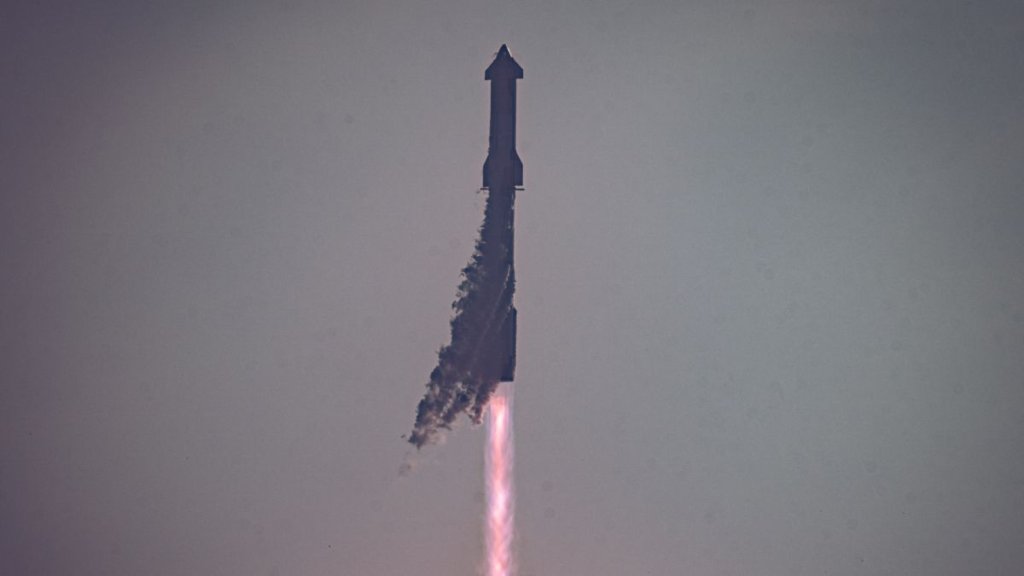SpaceX has submitted to the U.S. Federal Aviation Administration (FAA) its final report about the debut launch of its Starship vehicle, which ended with a bang four minutes after liftoff.
SpaceX launched a fully stacked Starship for the first time ever on April 20, sending the giant rocket-spacecraft combo aloft from its Starbase site in South Texas.
The test flight aimed to get Starship’s upper stage partway around Earth, with splashdown targeted for a patch of the Pacific Ocean near Hawaii. But that didn’t happen; Starship’s two stages didn’t separate as planned, and SpaceX beamed up a self-destruct command, which resulted in the vehicle’s detonation high above the Gulf of Mexico.
Related: Relive SpaceX’s explosive 1st Starship test in incredible launch photos
The launch also caused considerable damage at Starbase, blasting out a crater beneath the site’s orbital launch mount and raining chunks of concrete and other debris on the surrounding area.
SpaceX soon initiated a mishap investigation — overseen by the FAA, which issues launch licenses — to determine exactly what happened on April 20 and what steps to take to boost the chances of a more successful outcome in the future.
Elon Musk‘s company has now filed that report, as Payload noted yesterday (Aug. 15). But that doesn’t mean Starship has been cleared to fly again.
“SpaceX has submitted its final mishap investigation report to the FAA for review. That review is ongoing,” FAA officials said in an emailed statement to Space.com.
“When a final mishap report is approved, it will identify the corrective actions SpaceX must make,” the statement added. “Separately, SpaceX must modify its license to incorporate those actions before receiving authorization to launch again.”
SpaceX has already taken some corrective actions. For example, Elon Musk‘s company recently installed a water deluge system beneath Starbase’s orbital launch mount, to dampen the immense power of Starship’s giant Super Heavy first stage.
That system — a steel plate that sprays huge amounts of water upward and outward — got its first real test on Aug. 6, during a “static fire” test of the Super Heavy prototype known as Booster 9.
SpaceX is prepping Booster 9 and an upper-stage vehicle called Ship 25 for Starship’s second full-up test flight, whose aims will be similar to the April 20 try.
Shortly after that first flight, Musk said that SpaceX should be ready to launch another Starship mission in six to eight weeks — a timeline that could allow for liftoff any day now. But don’t hold your breath; logistical hurdles still need to be cleared regardless of the technical progress that SpaceX has made.
The FAA is still reviewing the mishap report, for example. In addition, a coalition of environmental and Indigenous groups is currently suing the agency, claiming it didn’t properly assess the damage that Starlink launches could cause to the South Texas ecosystem and community.

